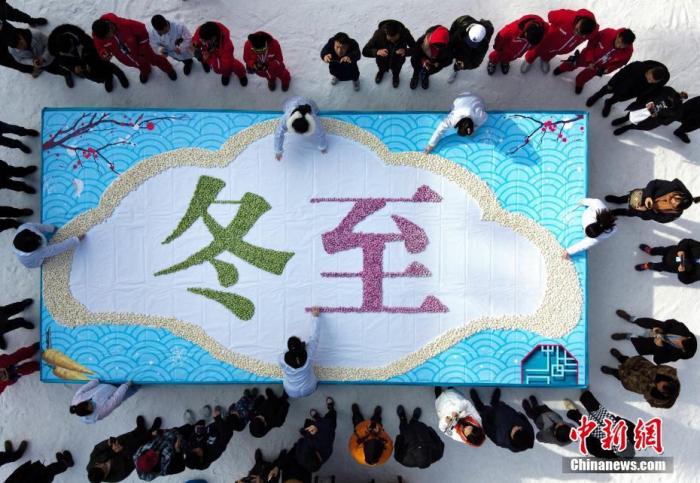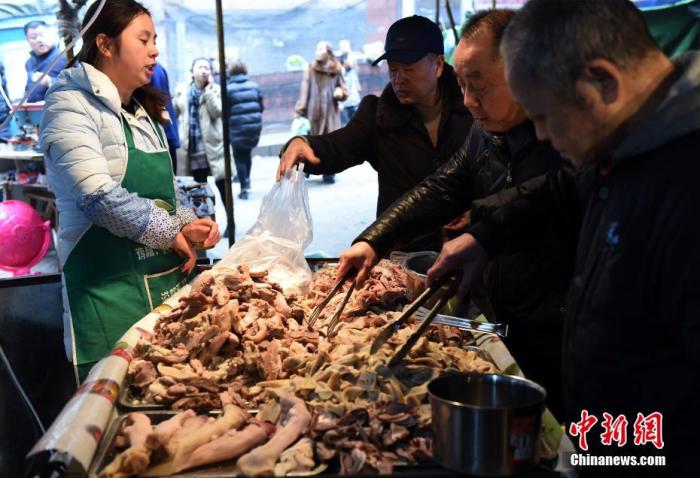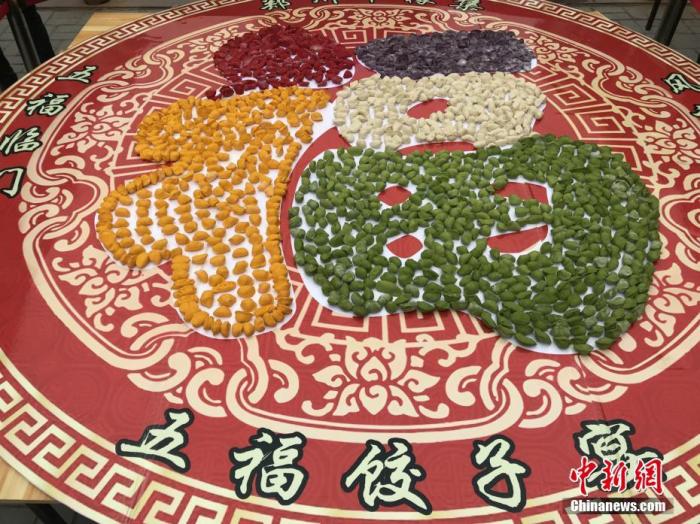Is the winter solstice a festival? Why do you always have to eat jiaozi?
Chinanews. com client Beijing December 21 ST (Reporter Shangguan Yun) Time goes by and the stars move. In a blink of an eye, another winter solstice is coming. Among the 24 solar terms, it is a very special one, which was also called "sub-year-old" in ancient times.
Up to now, the winter solstice occupies an important position in people’s minds, and the discussion about it has never stopped. Eat jiaozi and Tangyuan … … For many people, coming to a food that belongs to the winter solstice at this time also represents the expectation of the Spring Festival reunion in the near future.
Is it a festival?
The winter solstice is one of the 24 solar terms, also known as "Winter Festival" and "Happy Winter". It is also said that it is both a solar term and a festival. In the Zhou Dynasty, it was New Year’s Day, which used to be a very lively day.

Data Map: On the occasion of the winter solstice, a traditional festival in China, the staff of Funiu Mountain Ski Resort in Luoyang, Henan Province, used tens of thousands of jiaozi pieces to spell out a giant colorful jiaozi with a length of 7.32 meters and a width of 3.66 meters to welcome the traditional festival. Photo by Wang Zhongju
In ancient books, it seems that we can also find evidence that the winter solstice is a festival. It is recorded in the literature: "The sun is shining on the winter solstice, and the monarch is long, so congratulations … …" In other words, people originally celebrated the Winter Solstice Festival to celebrate the arrival of the new year.
The winter solstice as a festival originated in the Han Dynasty and flourished in the Tang and Song Dynasties. However, the first month of the Zhou calendar is November in the summer calendar, so the first month of the Zhou Dynasty is equal to November now, and there is actually little difference between worshipping the New Year and greeting Dong.
However, some scholars believe that strictly speaking, the winter solstice is not a festival. Wang Juan, a folklore expert, said, "This solar term appeared very early, and the way of celebration also appeared earlier, but it can’t be simply equated with the festival we are talking about now."
"In ancient times, many important activities were held on the Winter Solstice, with rich contents, but different places celebrated in different ways, with great differences." She explained that the usual folk activities probably include sending shoes to the elders, "counting nine" and drawing pictures to eliminate cold.
Wang Juan said, "There is a saying that Confucius will be sacrificed at the Winter Solstice, and there will be a grand ceremony, but this is not a celebration in the general sense. Therefore, the winter solstice is still different from the traditional festival New Year that we are talking about today. "
As a "sub-year-old" winter solstice
Aside from the discussion about whether it is a festival, the winter solstice is indeed a special existence among the 24 solar terms. It is at the time when yin qi rises and yang qi occurs, and it is also the starting point of traditional calculation of twenty-four solar terms.

Data Map: On the day of the "Winter Solstice" solar term, the business of an old-fashioned mutton restaurant in Chongqing was booming, and many citizens queued up for supplements. Some citizens also bought mutton and stewed it themselves. Photo by Zhou Yi
In the concept of the ancients, the winter solstice is in the season of replacing the old and the new, which naturally has extraordinary cultural significance. Many customs and ceremonies in the winter solstice festival come from people’s feelings about this season.
It is recorded in the Book of the Later Han Dynasty: "Before and after the Winter Solstice, a gentleman lived quietly, and a hundred officials refused to listen to politics, choosing auspicious days and then saving trouble." On this day, the imperial court will have a holiday and rest, and have a "quiet life" festival happily.
Later, during the Spring Festival, ancestor worship, family dinners and other customs often appeared in the winter solstice. The winter solstice was once called "small year", which shows its importance. During the Wei, Jin and Six Dynasties, the winter solstice was called "sub-year-old", and people should pay homage to their parents and elders.
After the Song Dynasty, the winter solstice gradually became a festival to worship ancestors and gods. In the folk, the scale of ancestor worship is much smaller, and people are more likely to follow some appropriate customs, such as eating wonton, red bean rice and so on.
Solar food, not just to satisfy taste buds.
"A hundred miles of different winds, a thousand miles of different customs." The significance of the winter solstice to people is not just a time node.
It was mentioned in an article that people in Suzhou in the Qing Dynasty paid the most attention to the Winter Solstice Festival. On the day before the Winter Solstice, relatives and friends fed each other holiday food, and people carrying baskets and boxes filled the road, commonly known as the "Winter Solstice Plate".
The seasonal food of Suzhou Winter Solstice is the Winter Solstice Ball, which is made of glutinous rice flour and wrapped with sugar, meat, vegetables, fruits, pea paste and shredded radish. People use it to worship the first stove and feed each other as a festival gift.

Data Map: The picture shows the Five Blessingg Dumpling Banquet to welcome the winter solstice. Photo by Han Zhangyun
Most northerners are used to eating jiaozi at this time, while some places in the south are willing to have a bowl of glutinous rice balls. After the winter solstice, it is the time when the sun is shining. Green is easy to remind people of spring. Some places will deliberately eat some green vegetables at this time to show that they are in line with the weather. In the cold winter, they are looking forward to the early arrival of the season of birds and flowers.
Therefore, whether we eat jiaozi or wonton, what people care about is not the satisfaction of taste buds.
From the ancient name of "sub-year-old" to the winter solstice night, which is often mentioned today, I am afraid that everyone pays so much attention to this ancient solar term because it always appears at the end of the year and is no longer far away from the Spring Festival reunion.
"After eating the winter solstice noodles, a line grows a day." After the winter solstice, as time goes by, the days get longer, the nights get shorter, and the footsteps of spring get closer.